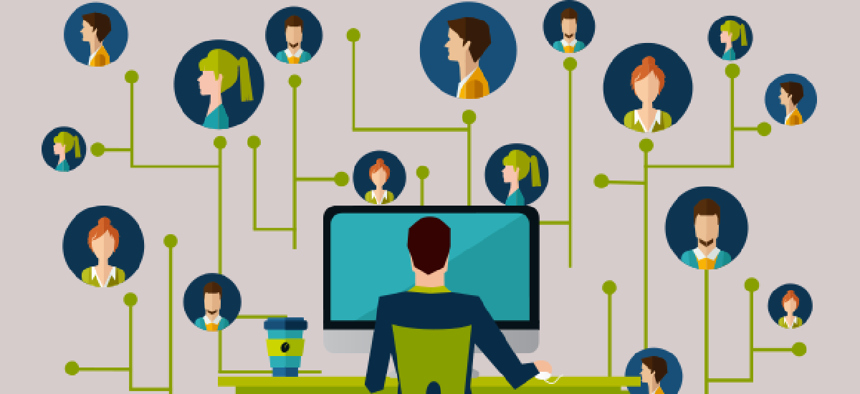Telework’s future: collaboration and outcome-based management

New tools will be necessary to deliver what some consider the next era of telework: linking managers and employees in ways that improve performance.
Although telework might have started out as a way to maintain continuity of operations, new tools will be necessary to deliver what some consider the next era of telework: linking managers and employees in ways that improve performance.
“Many organizations can see who is teleworking -- like seeing how often they telework -- but we haven’t gotten to the point of linking this into our performance systems,” said Alexis Bonnell, innovation evangelist at the U.S. Agency for International Development’s U.S. Global Development Lab. “Linking telework to achievements is the new frontier.”
“Great managers manage outputs, not what seat someone is sitting in,” she added. “Telework should be seamlessly managed, meaning the manager and employee interaction is constant regardless of location. Technology should support that.”
The use of collaborative tools “beyond email, including chat, text and shared document systems, e-clearance…can help telework managers stay connected with their staff and manage outcomes,” Bonnell said.
USAID has used Google Talk, which provides both text and voice messaging, and Huddle, a collaboration platform that helps manage projects, share content and control document approvals with time-stamped audit trails.
She described the ideal telework tool as a project management platform with built-in video and calling tools that could support distributed teams of teleworkers. “Basecamp mixed with Slack and Skype video calls would be great,” she said.
“If a team member is working remotely and I can have confidence that not only can I reach them but I can also understand where in a task delivery they are, that is ideal,” Bonnell added.
Managing and participating in workgroups is also the aim of Broadsoft’s UC-One Hub, a cloud-based tool that bundles unified communications services, including telepresence, texting, and audio and videoconferencing.
“Having access to a technology that shows me you’re actually available and working with me side-by-side, logically and digitally, is very important,” said Taher Behbehani, the Broadsoft’s chief digital and marketing officer. “I think that’s a huge advantage.”
Integration across such tools is critical, Bonnell said. The use of videoconferencing systems and even more avant garde technologies such as Double Robotics’ telepresence robot, which gives remote employees a physical presence in the office, can be effective in keeping teleworkers integrated into the workplace.
“The best telework systems will quite simply remove the concern of technology from the equation and will become seamless aspects of our daily life,” she said. “They will make us feel connected at a very human level, will be easy to use [and] will have an incredibly low learning curve.”
Editor's note: This article was changed May 9 to correct the name of Broadsoft’s UC-One Hub.





